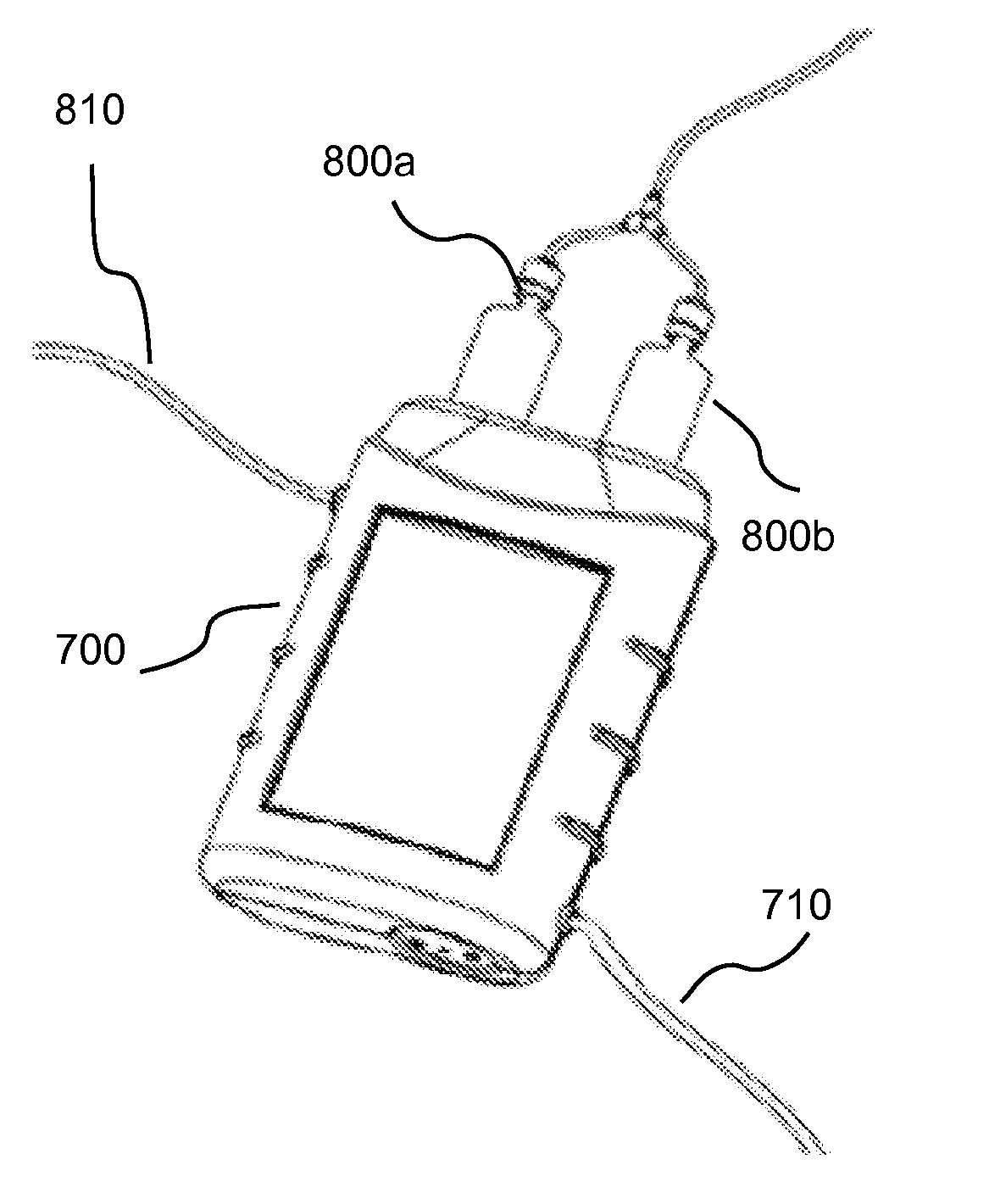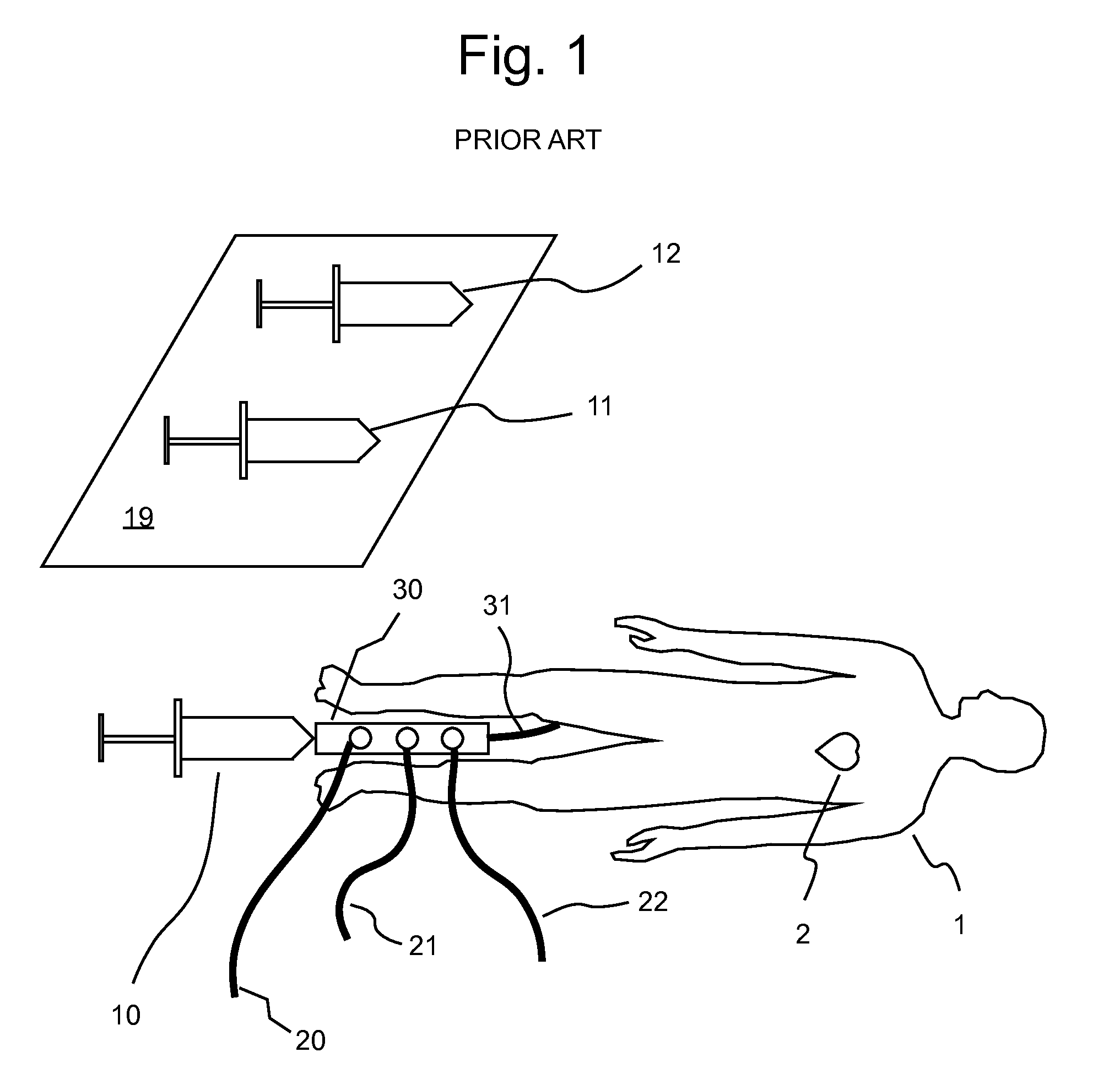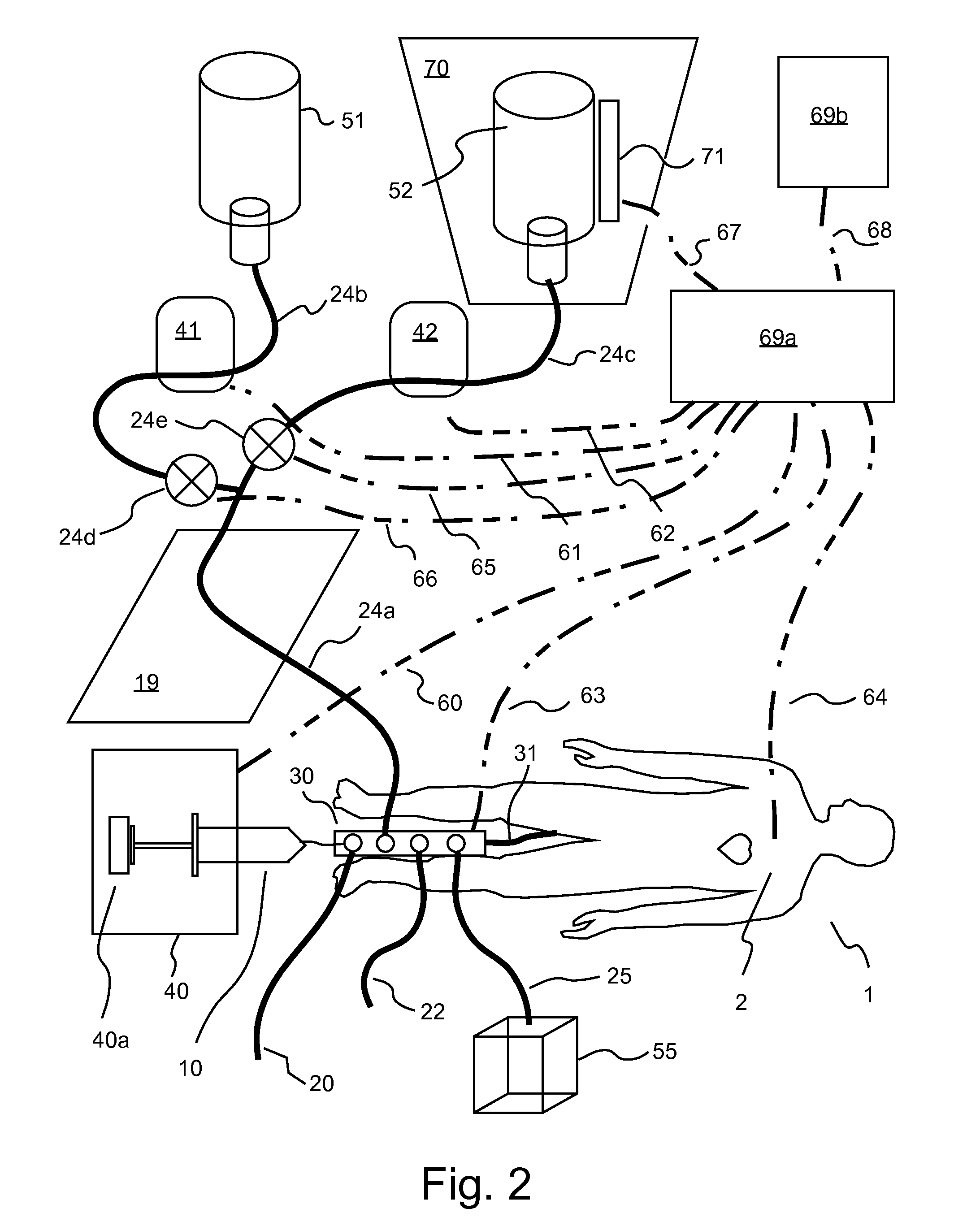Fluid delivery systems, devices and methods for delivery of hazardous fluids
a technology of fluid delivery system and hazardous fluid, which is applied in the direction of packaging foodstuffs, packaging goods, and therapy, etc., can solve the problems of requiring that the doctor manipulate the fluid path, carries some risk of operator error, and takes time to manipulate, so as to facilitate the operation and ensure the safety of the patient. , the effect of ensuring the safety of the patien
- Summary
- Abstract
- Description
- Claims
- Application Information
AI Technical Summary
Benefits of technology
Problems solved by technology
Method used
Image
Examples
Embodiment Construction
[0072]A system currently used for the injection of a gene therapy drug is illustrated in FIG. 1. In FIG. 1, a patient 1 has a catheter 31 inserted via a femoral (leg) artery into the arteries nourishing the patient's heart 2. A number of catheters with single or dual side-by-side lumens are commonly used. The catheters can have just an end hole, or multiple side holes to increase the mixing of the drug with the blood. An infusion catheter slid inside a guiding catheter is also commonly used. Other arteries can be used for accesses as well. The external end of a catheter 31 is connected via a connector to a manifold 30, either directly or with an intermediate piece of tubing (not shown). Other common angiographic equipment and personnel such as a guide wire, a hemostasis valve, an X-ray imaging system, an MR imaging system, an ultrasound imaging system, or other imaging equipment, as well as physicians and nurses are not shown in FIG. 1.
[0073]Manifold 30 has several valves, typically...
PUM
| Property | Measurement | Unit |
|---|---|---|
| pressures | aaaaa | aaaaa |
| volumes | aaaaa | aaaaa |
| flexible | aaaaa | aaaaa |
Abstract
Description
Claims
Application Information
 Login to View More
Login to View More - R&D
- Intellectual Property
- Life Sciences
- Materials
- Tech Scout
- Unparalleled Data Quality
- Higher Quality Content
- 60% Fewer Hallucinations
Browse by: Latest US Patents, China's latest patents, Technical Efficacy Thesaurus, Application Domain, Technology Topic, Popular Technical Reports.
© 2025 PatSnap. All rights reserved.Legal|Privacy policy|Modern Slavery Act Transparency Statement|Sitemap|About US| Contact US: help@patsnap.com



